Performance evaluation
for +30V power supply
|
I measured the characteristic of the power supply which was made this time. The output voltage is changed fairly by the load change. This power supply must be used with the circuit where few load changes occur. I measured the change of the output voltage when I change the frequency of the oscillator by VR1. The output voltage is maximized in 2,140KHz which is the resonant frequency. The output voltage is about 50 V. There is a frequency where the output rises as well as the resonant frequency, too. It is the frequency of the resonant frequency 1/3 and 1/5. It is resonating but this frequency is not in the true resonance condition. Because it is, the stability with the output voltage isn't good. 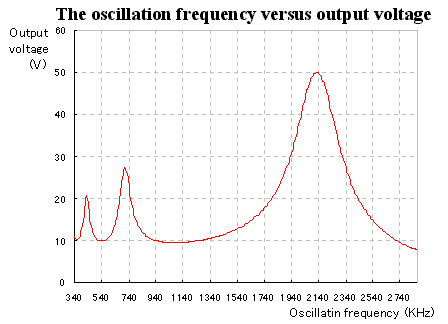 I measured the change of the output voltage when I change the load which connects with the output. I measured the characteristic at the resonant frequency and the frequency which came off the resonant frequency. As the result of the measurement, the voltage stability is better in the frequency which is not the resonant frequency. When not needing the +50 V, it had better use at the frequency which was a little shifted from the resonant frequency. 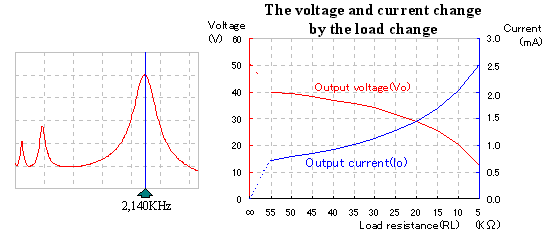 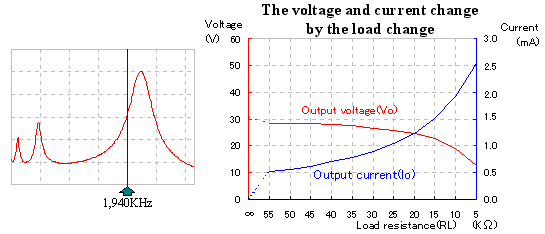 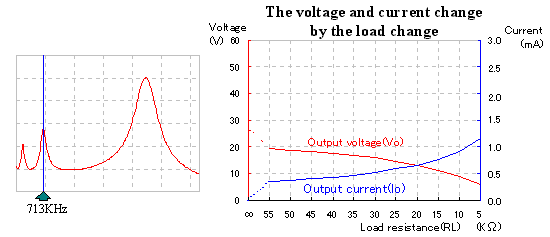 The circuit this time presupposes the stable input voltage of +5 V. In the try, I measured the change in the output voltage when I change the input voltage. The range of the change of the input voltage depends on the condition of the operation of IC(74HC14). I changed the input voltage in the range of ±0.5 V. I made the frequency of the oscillator the resonant frequency at the input voltage of +5.0 V and measured it in the no-load condition. Because the oscillation frequency changes when changing the input voltage, even if it makes the voltage high, the output declines. 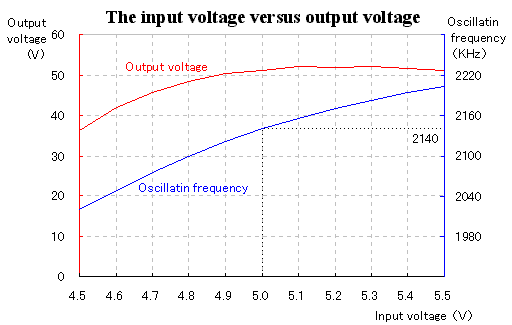 |